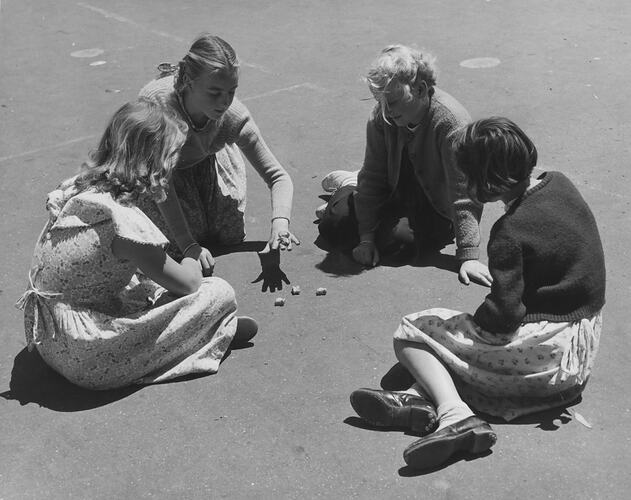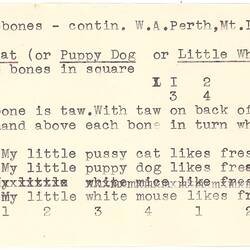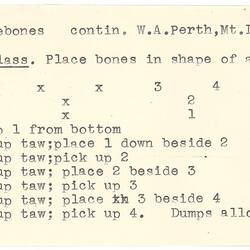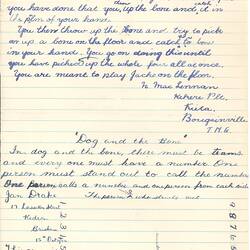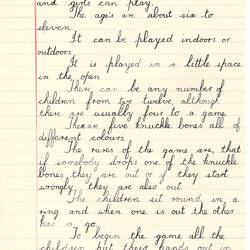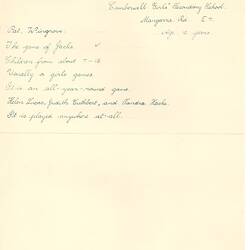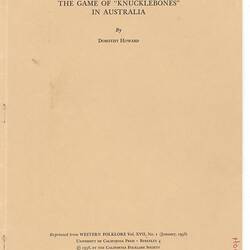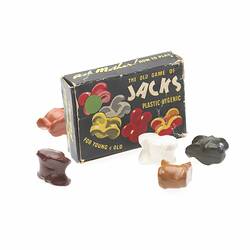American scholar and ethnographer Dr Dorothy Howard (1902-96) travelled across Australia from 1954 to 1955 collecting and documenting children's games and verbal lore in cities, country towns and small rural communities. Her significant pioneering work laid the foundations for children's folklore research in Australia. Museum Victoria's Dorothy Howard Collection features numerous aspects of Australian children's play with knucklebones gathered by Dr Howard during her fieldwork. It includes sets of knucklebones, photographs, descriptions of the various games compiled by children, teachers and adults, and transcriptions of accompanying rhymes.
The game of knucklebones, also called jacks, is a throwing and catching game. Children toss knucklebones in the air and pick up others, then catch the thrown knucklebones, usually on the back of the hand. The game can be played in a number of ways, including with tricks while the knucklebones are airborne. Different throws have distinctive names such as 'tally', 'buck', 'cradle', 'jumping the ditch' and 'horses in the stable'. In 19th-century Australia children were seen chanting as they played the game. Knucklebones is an ancient game, passed from child to child through the centuries. The game was originally played with a variety of natural materials such as stones, seeds and shells as well as animal bones. Bones found in prehistoric caves in Russia are believed to have been used as playthings. The knucklebones (astragaloi) introduced in ancient Greek times are believed to have had Asiatic origins and to have been connected to dice, while a Greek sculpture from 330 BCE shows two girls playing with knucklebones. Sheep's knucklebones were the most common type of jack in Australia until the middle of the 20th century, and children would colour them by boiling them in water with ink or dye. During the 1950s, mass-produced plastic knucklebones became available.
The extraordinary survival of this game may have been due to its being played with inexpensive or free materials and it being relatively easy to teach, although the more complex throws require considerable skill. The game of knucklebones provides a strong example of the importance of verbal folklore for material culture. In preserving the game within the playground, details of how it was played and what children said or chanted as they played have been as important as the knucklebones themselves. The knucklebones also reflect the importance of play for children in the development of social, physical and intellectual skills. Playing together fulfils the human desire for friendship, and through play children learn to join with others and feel included while learning social skills such as sharing, taking turns and communicating.
More Information
-
Keywords
Australian Children's Folklore Collection, Children's Folklore, Folklore, Childhood, Games
-
Authors
-
Article types
